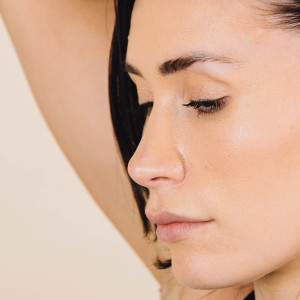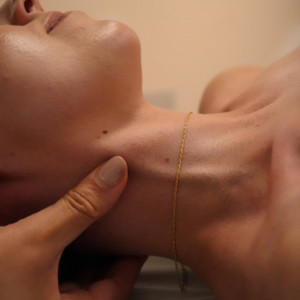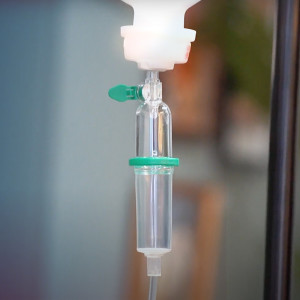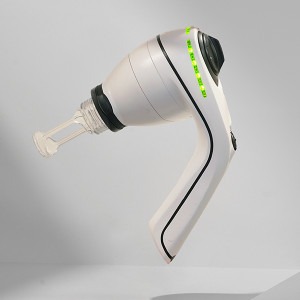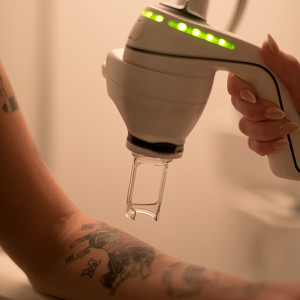Tattoo fading for a cover-up
What is a tattoo cover-up?
Tattoo cover-ups involve obscuring an old tattoo design with a new design. Fresh ink is placed directly on top of the old tattoo, perhaps to represent a new direction in a person's life, to relegate something to the past, or simply for a stylish update.
Laser tattoo removal greatly assists this process, as the initial design is faded and becomes easier to tattoo over in a safe and effective way.
The benefits of fading with NAAMA before a cover-up
Fading or removing your unwanted tattoo means you don’t have to compromise on your next design or worry about show-through underneath.
The LightSense™ laser system requires minimal downtime, so you can have sessions every 2-3 weeks and get ready for your cover-up sooner.
Our advanced yet gentle technology will not scar skin - leaving it smooth, healthy and ready for a new tattoo.


Publish Date in article
We offer tattoo removal for tattoo lovers, partnering with some of the most celebrated tattoo artists.
Get in touch and we'll be happy to recommend some incredible artists for your cover-up design.
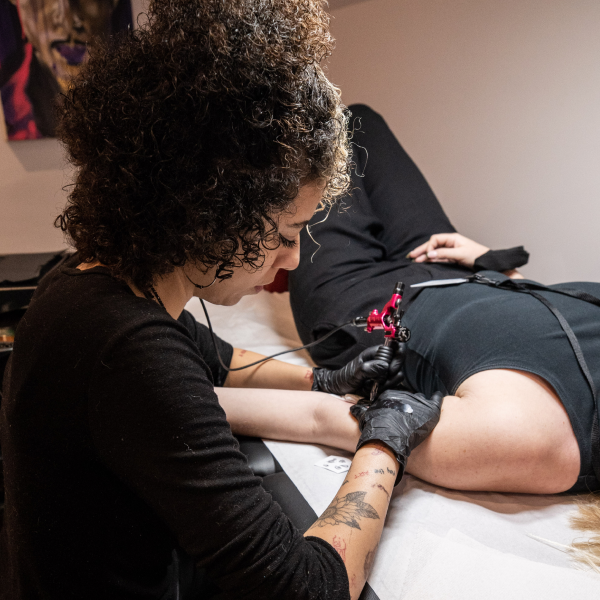

Tattoo Removal FAQs
Yes, it is possible to completely remove a tattoo with the LightSense™ laser system.
However not all tattoos are created equal, and there are a variety of factors that can impact the tattoo removal process. The success of the removal is dependent on the size, depth, position, and colour of the tattoo itself, as well as your skin type. The health of your immune system will also play a key part in the efficacy of the removal.
For a specific evaluation of your individual tattoo, contact us and discover how our experts can help you to achieve your goals. A complete tattoo removal is possible but there are certainly things you can do to improve the chances of full clearance.
We treat tattoos as often as every 2-3 weeks, and as soon as your skin is healed you can go get a cover-up.
Your consultant will be best placed to give an exact answer as to how soon you can return to the artist’s chair for new ink after tattoo removal.
On average a tattoo will take 8-12 sessions to completely remove; sometimes fewer sessions, sometimes more.
Each removal is unique and will depend on factors such as the tattoo location, type of ink used, skin type, aftercare, and the health of the immune system.
To find out more about the factors that influence how many sessions it will take, read our blog here.
We welcome and are able to treat all skin types at NAAMA.
Black ink can be treated on all skin tones, but there are some limitations on treating colour inks on darker skin tones due to an increased risk of skin damage. We can only safely treat coloured inks on Fitzpatrick 1-3 skin types.
Speak to one of our experts and get a personal assessment, or read more on our blog.
Return for treatments as often as every 2-3 weeks.
The gentle LightSense™ laser system uses significantly less energy than traditional laser tattoo removal devices. This means there is shorter downtime between sessions with clients returning more often, seeing results faster.
Permanent makeup removal is not ‘one size fits all’ and each case is completely unique.
As a guide, we suggest 1-3 sessions for light microblading removal and 3 minimum for machine brows or denser eyebrow tattoos. Many clients get their desired results in 3-5 sessions, but this varies. Our removal packages are a great option to explore for better value per session. The timescale is similar if you’re looking to come to NAAMA for lip blushing and lip tattoo removal, too.
NAAMA Plus is our highly-curated offering of IV therapy, lymphatic drainage massage, and a range of specially-designed skincare products. It helps in the following ways:
Lymphatic drainage massage can help to stimulate the flow of lymph throughout the body. This is the mechanism that removes unwanted ink pigment.
IV therapy supercharges tattoo removal results by providing the body with a blend of vitamins, nutrients, electrolytes, minerals and antioxidants.
Our Heliocare 360° SPF will keep your skin safe before treatments.
Stay hydrated, rest well, and enjoy exercise. The better the state of your general health, the more likely your immune system will respond positively to treatment.
Additionally, we advise that you protect your skin with a sun-safe skincare routine and use a moisturising sunscreen with high SPF when exposing your treatment area to direct sunlight within two weeks of your treatment.
You might also like to explore our highly-curated range of NAAMA Plus treatments, paired with laser tattoo removal to supercharge your results.
You may be asked to shave if the removal area is densely covered with hair. We will not ask you to shave your eyebrows. Speak to our expert consultants for more information.
The Fitzpatrick scale is a numerical classification of human skin types, from 1 to 6. We use this to assess individual skin types so we can create safe and bespoke treatment plans for each client.



